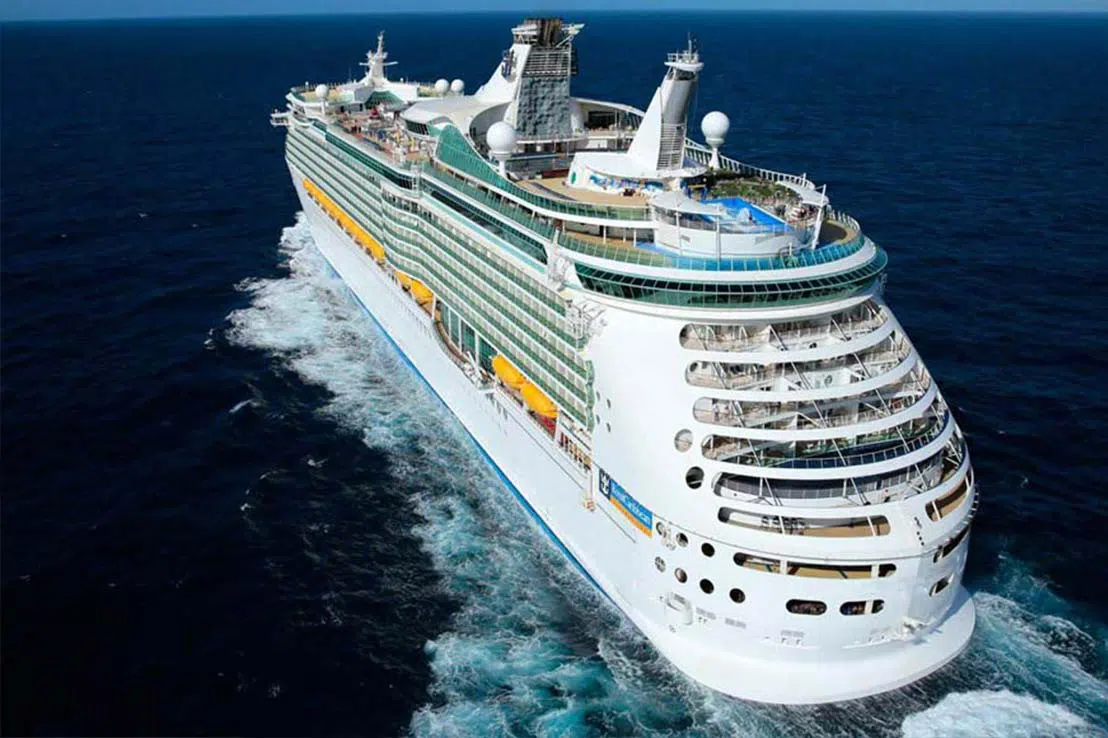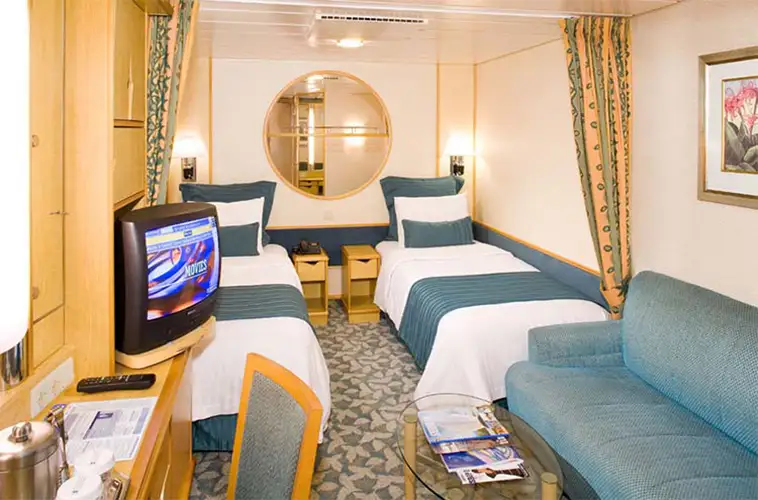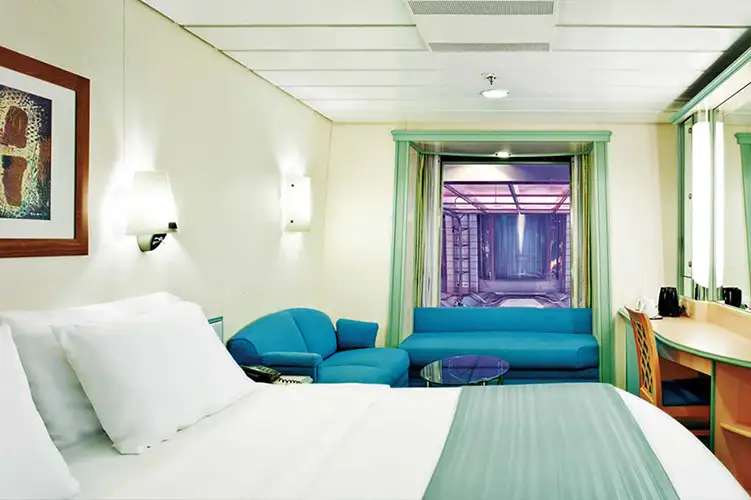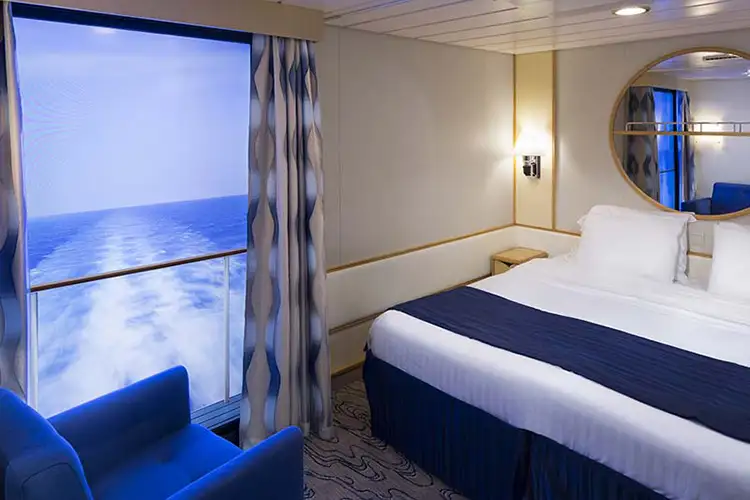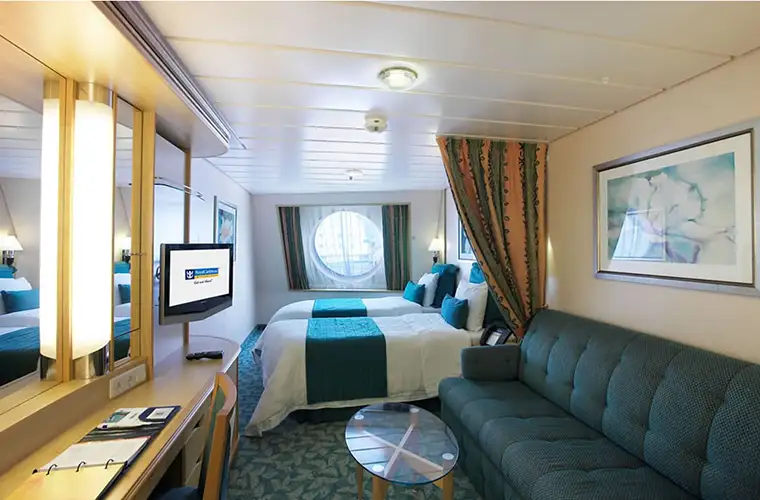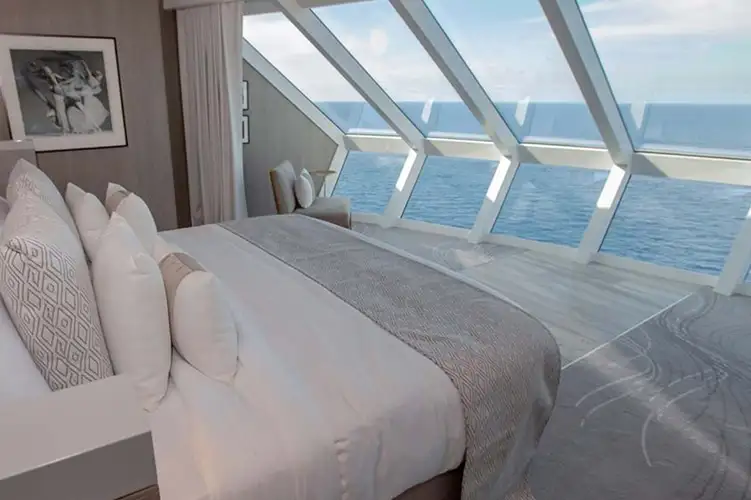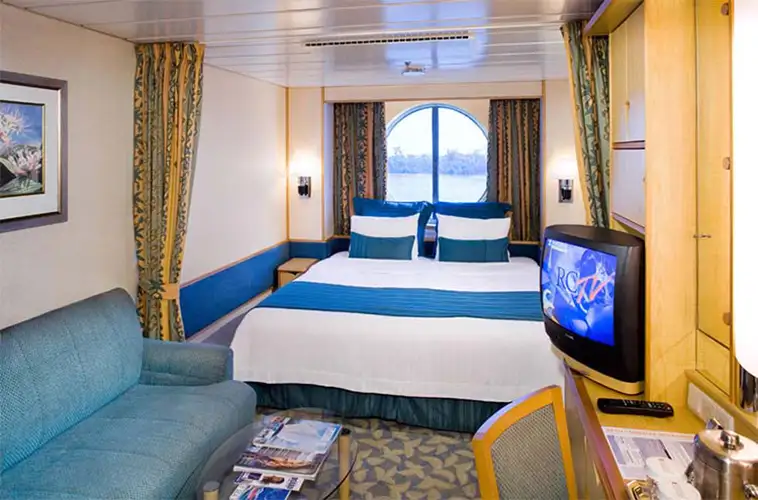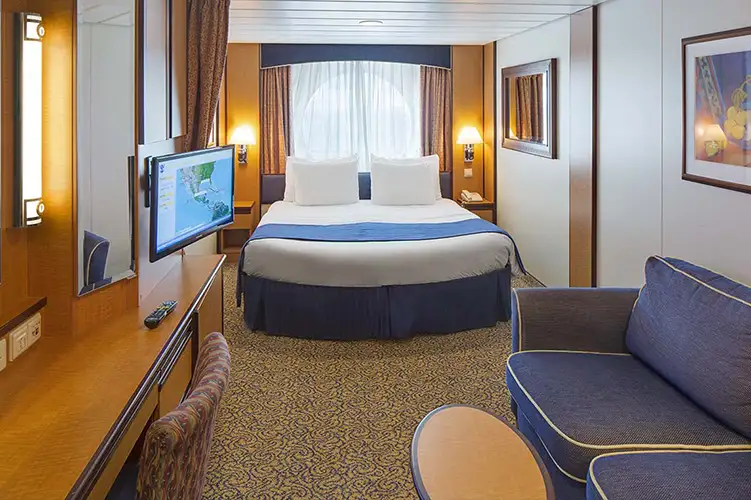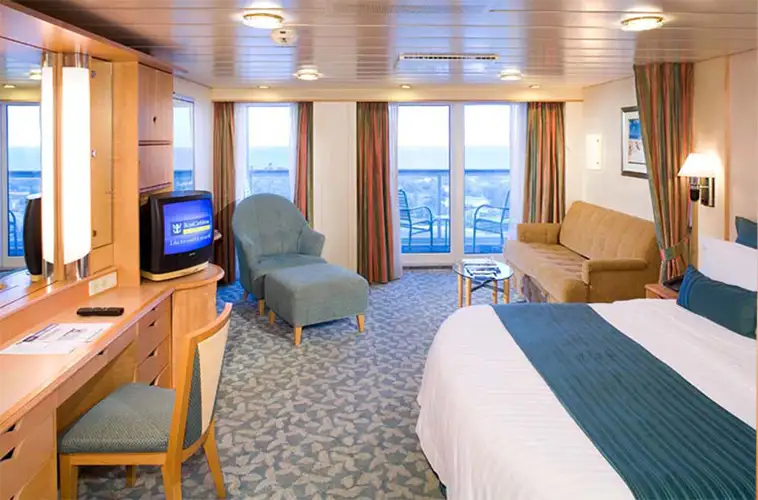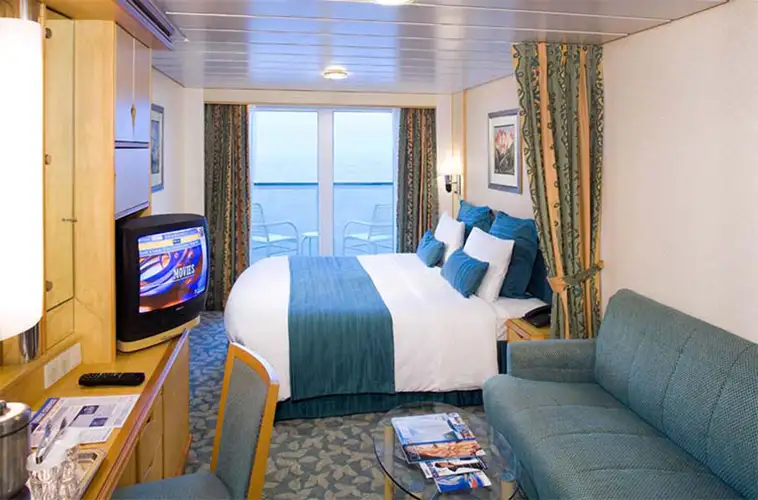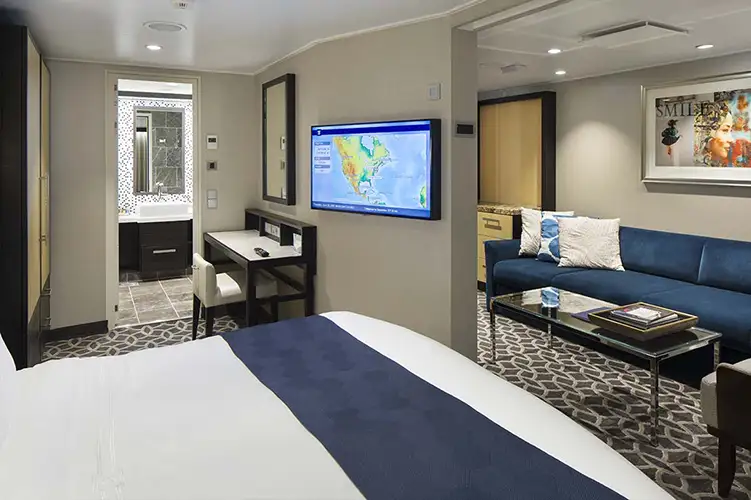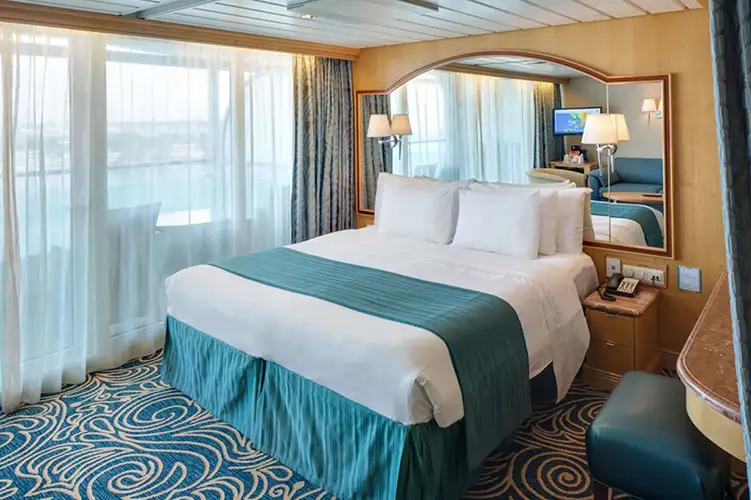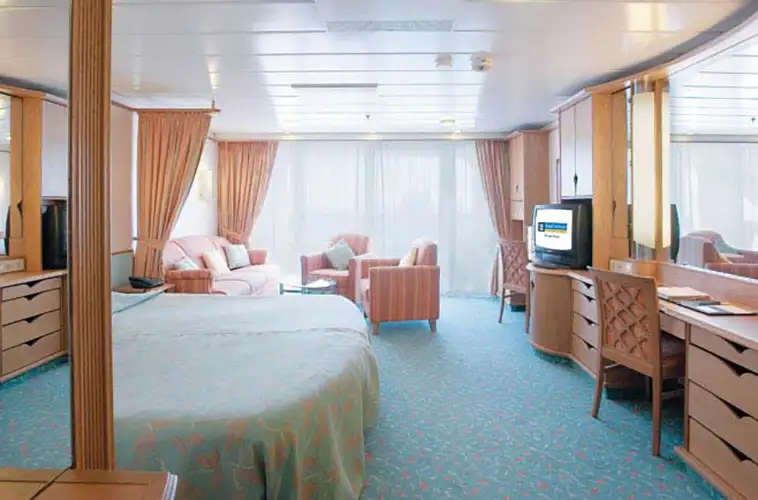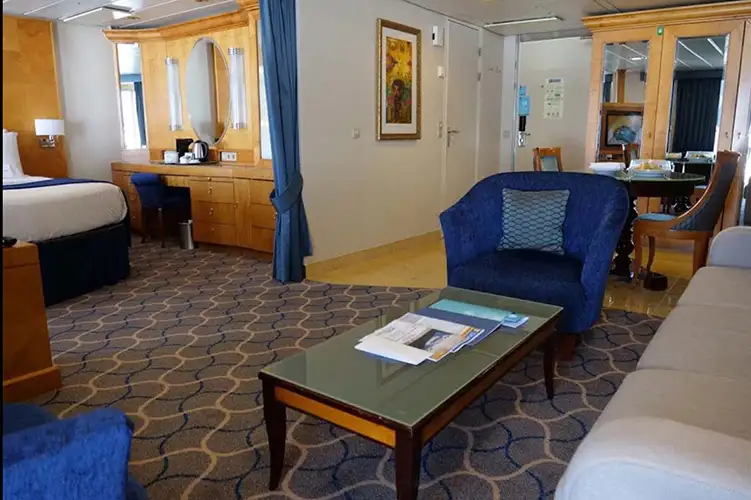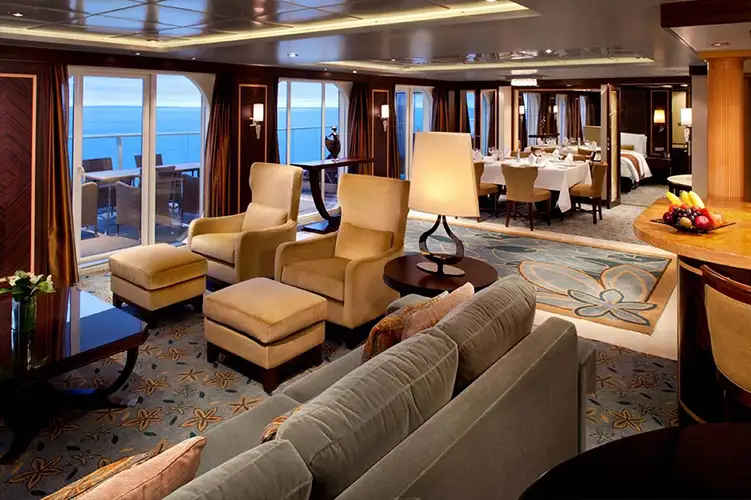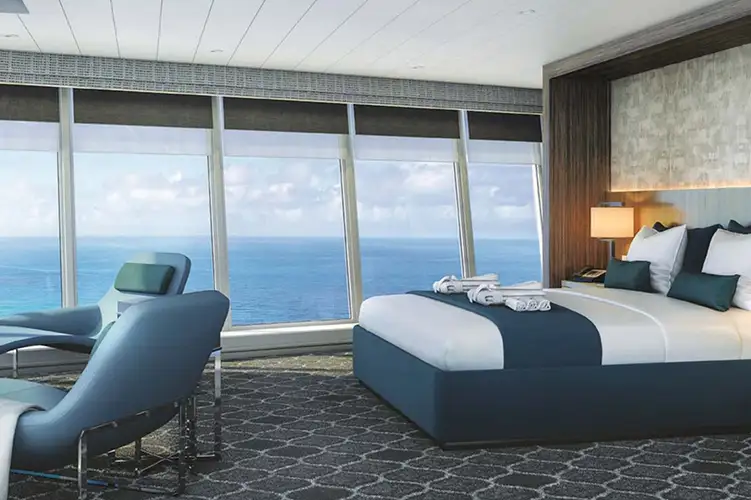Royal Caribbean Greek islands: 7 nights from Ravenna with Explorer Of The Seas
Aug 16, 2025
Italy, Montenegro, Greece
Cruise itinerary
Departure Port: Ravenna ➞
Landing: Ravenna
-
Saturday, August 16, 2025 - 5:00 PMRavenna
-
Sunday, August 17, 2025Navigation
-
Sunday, August 17, 2025 11:59 AM - 8:00 PMKotor
-
Monday, August 18, 2025Navigation
-
Tuesday, August 19, 2025 7:00 AM - 7:00 PMAthens
-
Wednesday, August 20, 2025 7:00 AM - 7:00 PMSantorini
-
Thursday, August 21, 2025 11:59 AM - 8:00 PMArgostoli
-
Friday, August 22, 2025Navigation
-
Saturday, August 23, 2025 6:00 AMRavenna
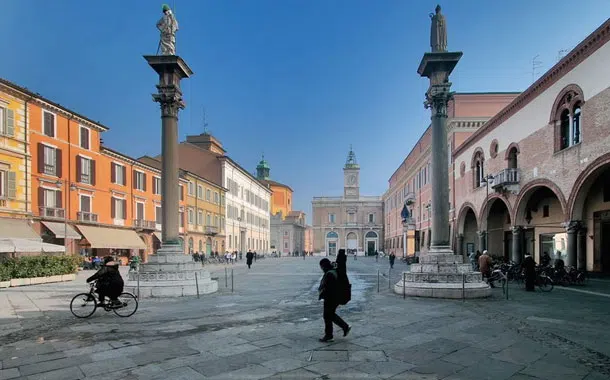
Ravenna
Ravenna is located on a plain near the confluence of the Ronco and Montone rivers, 10 km inland from the Adriatic Sea, with which it is connected by a canal.
Ravenna was important in history as the capital of the Western Roman Empire in the 6th century AD.
Nothing remains of the ancient Roman structures of Ravenna or its port of Classis.
The fame of Ravenna is instead based on the quality and quantity of its Christian monuments from the 6th-XVIII century.
Capital of the Western Roman Empire for 250 years and an important port of entry for the Eastern (Byzantine) Empire,
Ravenna reflects in its art and architecture a fusion of Roman architectural forms with Byzantine mosaics and other decorations.
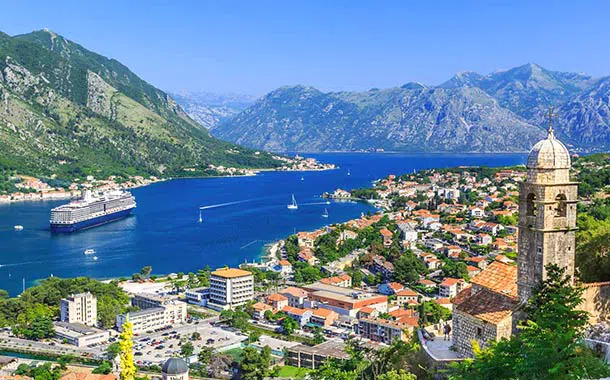
Kotor
The Adriatic Sea penetrates the jagged coast of Montenegro and winds between high mountains until it meets the exquisite and walled medieval city of Kotor.
Along the Adriatic coast of the former Yugoslavia, we find one of the most unique and fascinating European coastal areas, the city hidden in Montenegro, Kotor.
Located at the bottom of a bay, the beautiful medieval city of Kotor is considered a Mediterranean location surrounded by cliffs and an interesting historic wall. The tourist attractions of Kotor are easily reached with a pleasant walk. This small walled city, declared a UNESCO World Heritage Site, has compact dimensions that make it comfortable and easy to visit.
The central part of Kotor was built between the XII and XIV centuries. A historic center surrounded by a rather thick wall, four and a half kilometers long and fifteen meters high. This immense fortified wall reaches the bastion of Sveti Ivan (San Giovanni).
Inside the walls, it preserves an urban network cut into the stone. Its most emblematic work is the Cathedral of San Trifone, built in the 12th century. Inside the church it contains objects and frescoes sculpted during the 14th century. Furthermore, The Orthodox Church of San Nicolas, built between 1902 and 1909 in neo-Byzantine style and that of San Luca (13th century) built in Romanesque and Byzantine style.
Together with the churches, the city includes many palaces that tell its history: the Maritime Museum, located in the Grgurina Palace, a splendid baroque building located in the historic center of the country. The Drago house, with its beautiful Gothic windows, the Prima building, where Renaissance and Baroque lines are combined, the Ducal Palace and the Bizanti, both from the 17th century and the Napoleonic theater in the 19th century.
In Kotor, it is very common to see locals located along the rocky coast in the lower part of the city. In the old part of the area you will find many shops and restaurants that will delight your eyes. This location is the classic ideal city to spend quiet days or for a romantic getaway.
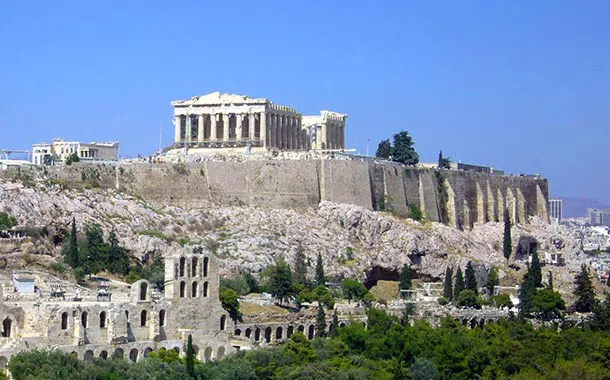
Athens
For many, Athens is a city lived two thousand five hundred years ago. Symbol is the mighty Acropolis which dominates almost every view and itinerary of every visitor, crowned by the iconic Parthenon, stands above the city, watching the sprawling modern metropolis in evolution.
Athens, the capital of Greece, is a city where antiquity and modernity, history and contemporary culture blend in a unique way. Everyone knows that the name of the city derives from the ancient Greek goddess of wisdom and justice. However, few people actually know the legend behind this event. According to myth, Athena and Poseidon, the God of the seas, vied for the right to name the city. Poseidon, to impress the inhabitants, gave them water, while Athena gave them an olive branch.
At first the choice fell on Poseidon, since the citizens considered water the most precious gift. When, once they tasted the water, they discovered that it was salty and not drinkable, they changed their minds and recognized Athena as their patron. One of the most famous historical sites in the city is the Acropolis, a majestic hill topped by ancient Doric temples, including the Parthenon, built in 477 BC. and the Erechtheion, built between 421 and 406 BC. Climbing the Acropolis, tourists can enjoy a breathtaking view of the city and the Aegean Sea. However, Athens is not only history, but also a lively cultural capital. In the Plaka district, located at the foot of the Acropolis, it is possible to stroll through the welcoming streets, visit the traditional Greek taverns and enjoy the authentic atmosphere.
Then there are the numerous cultural activities offered by the numerous museums, galleries and theaters present in the city. Athens is an important port for cruise ships that offer trips to the Mediterranean and beyond. Cruises from Athens allow guests to explore the rich cultural heritage of Greece, including the islands of Crete, Santorini and Mykonos, where you can admire the crystal clear waters of the Aegean Sea and a coast of white houses.
In addition to the Greek islands, cruises from Athens also offer the opportunity to visit other exciting Mediterranean destinations, including historic cities in Italy, Croatia and Turkey. Athens is therefore not only the historical and cultural center of Greece, but also an important starting point for cruises in the Mediterranean, which offers guests the opportunity to immerse themselves in the great history and splendid landscapes of this unique region.
Many still think of Athens as an ancient city that thrived two and a half thousand years ago. Its symbol is the mighty Acropolis, which dominates almost every view and the itinerary of every visitor, and it is crowned by the iconic Parthenon, which rises above the city, overlooking the sprawling and evolving modern metropolis.
Perhaps the most significant change is in the historical centre, which is almost unrecognisable since cars have been banned. This has liberated the area with the most significant archaeological sites, creating the longest, and undoubtedly one of the most splendid, pedestrianised zones in Europe. This huge archaeological park has brought past and present together, returning the cultural and social life of the city to the area around the ancient monuments and surrounding neighbourhoods.
Athens remains a city of contradictions; it is both frustrating and seductive. It is the oldest city in Europe, yet still in a state of transition. It is one of the safest and most vibrant European cities - an intoxicating mix of grunge and grace with an undeniably urban soul.
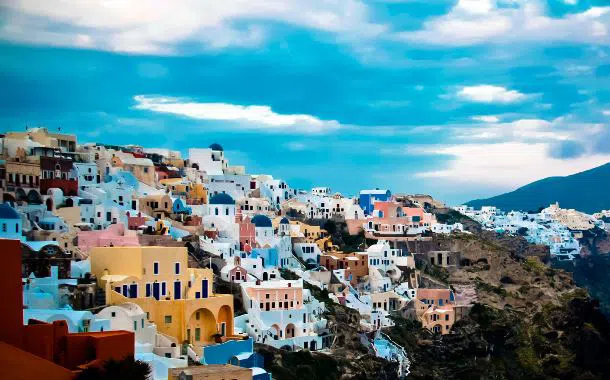
Santorini
Santorini is a small circular archipelago of volcanic islands located in the southern Aegean Sea, about 200 km southeast of mainland Greece.
Santorini is located in the southern part of the Cyclades.Its special geological configuration gives a spectacular, wild and unique beauty, becoming one of the main tourist destinations in Europe.
The current crescent shape of Santorini is a consequence of the enormous volcanic explosion that destroyed much of the island causing the formation of the caldera present on the territory, inside which form a series of wonderful small islands.
The island is a sanctuary of peace and calm, an idyllic corner where tourists from all over the world enjoy a few moments of pleasant relaxation. However, the quiet Santorini is, at the same time, one of the most suggestive and festive places in Greece. The square in the center of Fira and the beaches of Kamari, Perivolos and Perissa are the most lively and fashionable places.
The volcanic beaches of Santorini are not the best known in Greece, but they stand out for their diversity, their unique charm and the unique colors of the sand and stones. Santorini offers a spectacular view of the city, eclectic cuisine, enchanting art galleries, a very fun nightlife and excellent wines.
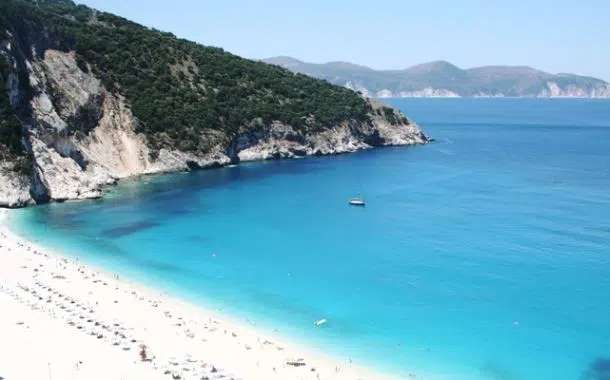
Argostoli
Argostoli is the capital and main port of the Greek island of Kefalonia. It is located 100 km west of Patras and has a population of about 13,000 inhabitants. The island is part of the archipelago of the Ionian Islands or Eptaneso.
This small city has been the capital of the island from 1757 to today and is located in the center of the southern part of the territory, surrounded by mountains and green forests.
Argostoli has monuments of great historical interest, such as the Archaeological Museum, which preserves archaeological finds from the Mycenaean to the Hellenistic and Roman periods. The Korgialenios Museum, a historical and ethnographic museum of the island, which contains a detailed reconstruction of the uses, customs and traditions of the place. The lighthouse of San Teodoro, located a couple of kilometers from Argostoli, built by the English under the command of Governor Napier and consisting of a small circular building with white Doric columns.
From the walk in Lithostrotos avenue, the most commercial street in the capital, you will find the beautiful Orthodox Church of San Spiridione and the interesting clock tower and its splendid bell.
The stone bridge, composed of 650 meters in length and called Drapano Bridge, is located at the entrance to the capital flanked by a small pyramid in the center and dedicated to Charles de Bosset, builder of the bridge.
The modern and cosmopolitan city of Argostoli is constantly moving with interesting activities to offer. It has an elegant maritime promenade lined with palm trees and beautifully paved with colored stones.
The road ends at the small ferry pier where boats leave for the city of Lixouri and where small fishing boats dock.
The central square of the city, called "Plateia Valianou", is a large site full of numerous restaurants, clubs and bars. During the summer evenings, the square becomes really crowded.
In Argostoli you will find a place of extraordinary beauty with splendid mountains and wonderful beaches.

Ravenna
Ravenna is located on a plain near the confluence of the Ronco and Montone rivers, 10 km inland from the Adriatic Sea, with which it is connected by a canal.
Ravenna was important in history as the capital of the Western Roman Empire in the 6th century AD.
Nothing remains of the ancient Roman structures of Ravenna or its port of Classis.
The fame of Ravenna is instead based on the quality and quantity of its Christian monuments from the 6th-XVIII century.
Capital of the Western Roman Empire for 250 years and an important port of entry for the Eastern (Byzantine) Empire,
Ravenna reflects in its art and architecture a fusion of Roman architectural forms with Byzantine mosaics and other decorations.
